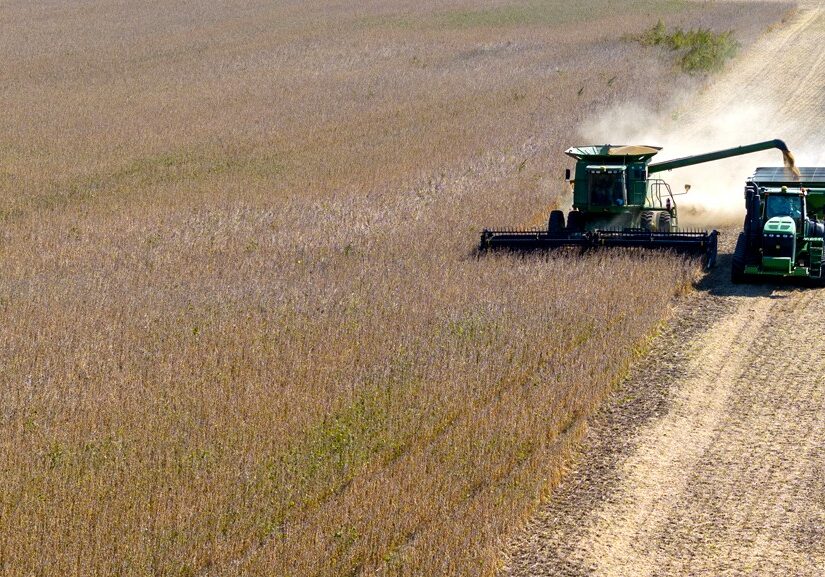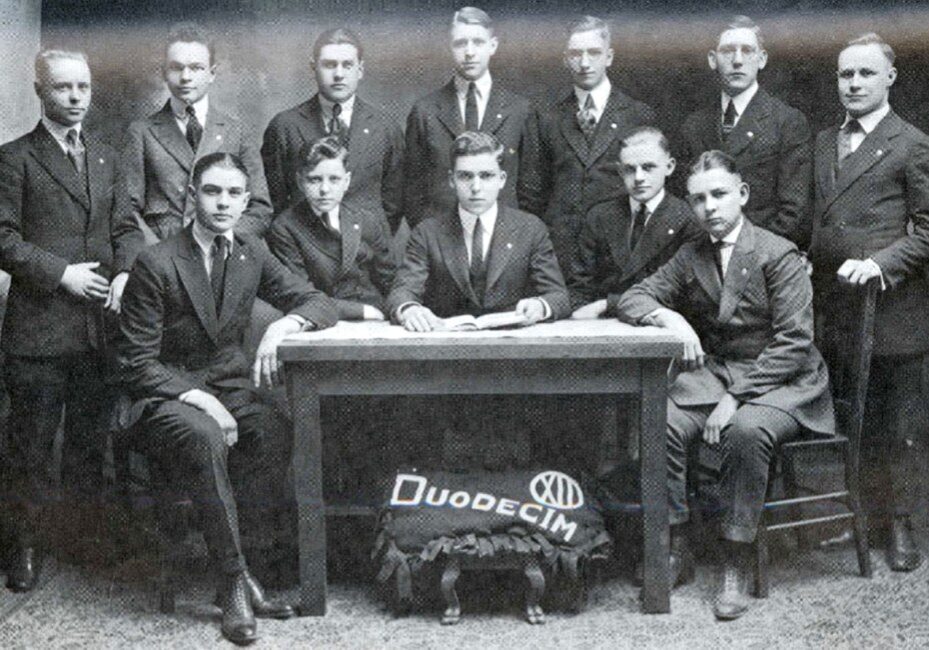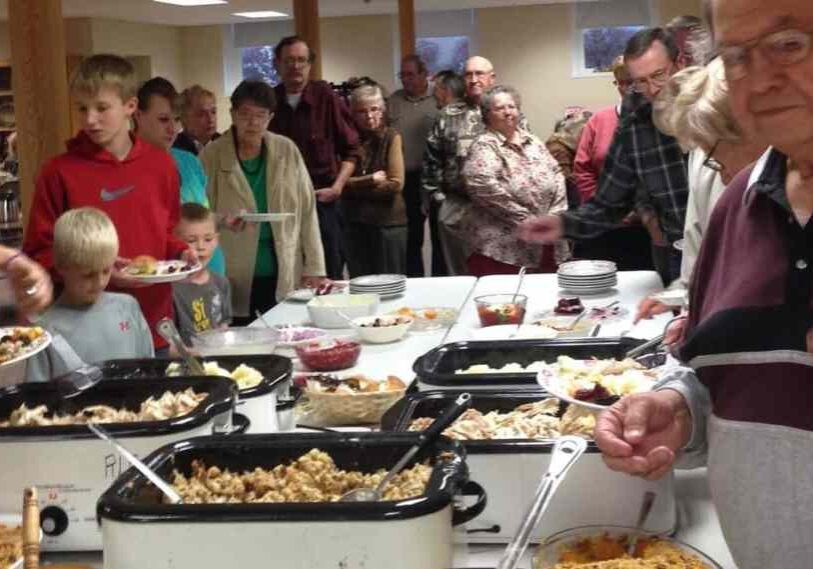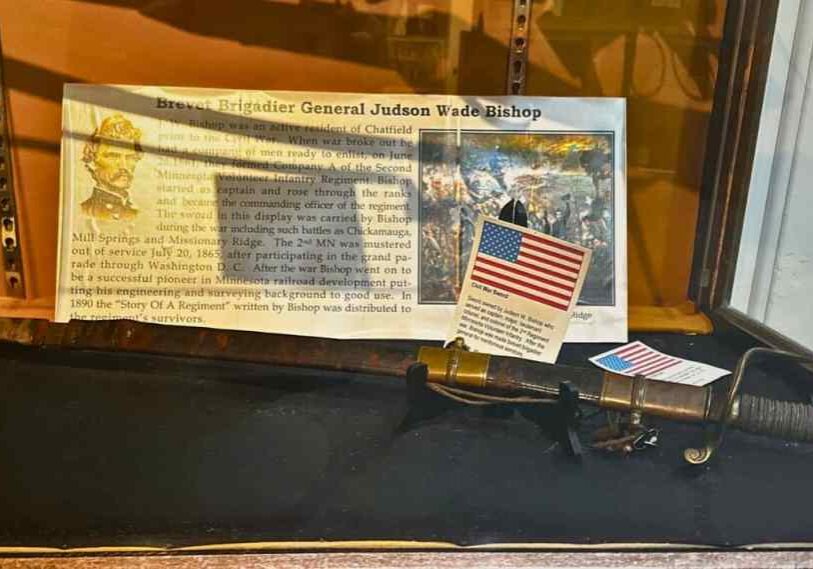Flavors of the World Converge at Carlson Roasting Company

HOUSTON — Kindergarten is the typical start of one’s academic career in the United States, and for Bob Carlson, it was also the start of his love of coffee.
Bob, owner of Carlson Roasting Company in Houston, Minn., grew up in Edina, Minn. and went to work with his dad on Saturdays at their family machine company. Entrepreneurship runs in the family and his dad worked at the family machine business started by Bob’s grandpa, a WWII machinist. Bob remembers often wandering to the cafeteria to make himself a cup of coffee and add a lot of sugar and cream to enjoy his brew.
After attending Luther College in Decorah and meeting his wife, they lived in the Twin Cities for years. Bob’s grandma was from Preston, so he’d grown up visiting bluff country; when their five children were young, Bob and his wife decided to move to a rural area to raise their family.
The family settled in Houston where they quickly became part of the business community as well as volunteering with local organizations.
With his broker’s license, Bob owns and operates Coffee House Real Estate, which has three real estate agents. He owned and sold different commercial buildings in Houston; the first family venture they started was Barista’s Coffee House.
After about three years, they sold the coffeehouse and Bob’s wife bought him a home coffee roaster. As Bob gained experience with his home roaster, a new business idea sprouted, and in 2013 they opened Carlson Roasting Company.

Carlson Roasting Company is located in downtown Houston, right along State Highway 16 as it goes through town. (Photo by Alison Leathers)
Small farms, big flavors
Their coffee starts with beans that come from around the world, from such countries as Mexico, Ethiopia, and Papua New Guinea, and often from farms that are only one acre in size (by comparison the average U.S. farm size in 2023 was 464 acres). The beans that Carlson Roasting purchases are all fair trade and organic, and the business takes pride in supporting coffee farmers from around the world.
These one-acre coffee bean farms are part of co-ops where many small farms work together to sell their beans. Their supplier often sends samples of these different beans so Bob can use his small coffee roaster to try new varieties.
After a coffee farmer harvests their beans, they dry the beans through one of two different processes. Washed coffees are beans that are de-pulped and dried on a patio; natural coffees are dried on a raised bed, without de-pulping them.
“There are different flavors from natural fermentation when drying beans on the raised bed,” according to Bob. “Some roasting companies will even co-ferment coffee beans with other fruit, like mangos, to introduce flavors.”
Bob considers data from his bean supplier, such as what elevation the beans were grown at and how the beans were dried, to determine how to roast the beans.

Green coffee beans from Ethiopia ready to be roasted. (Photo by Alison Leathers)
Time to roast
The care and passion Bob and his team have for roasting coffee is remarkable, with their strong desire for each bean to reach its full flavor potential and to create true “craft”, or small-batch, roasts.
Bob attended different trainings for coffee roasting and started his business right when sensors began to be used in the roasting process. “The sensors help to increase your ability to use data to improve your quality,” Bob said.
The business purchased a roaster that was made in Germany; it’s hooked up to a laptop to read the conditions’ data coming from the sensors. Even with the use of sensors, Bob and his team manually watch each roasting process, which takes about 10-12 minutes, to check the different data points (gas, temperature, airflow) and to smell and look at the beans as they roast.
In explaining the science behind roasting beans, Bob says it all starts with the Maillard reaction, “the browning process of converting sugars into flavors, and this is when the true roasting begins.”

Roasted beans move through the roasting pan and are pushed around by mechanical arms. (Photo by Alison Leathers)
Then the “first crack” happens, which is the “benchmark to how long and what temperature” to roast the beans, Bob says. At Carlson Roasting Company, a light roast coffee means you increase the temperature by 20-25 degrees Fahrenheit at first crack, while a dark roast coffee means you increase the temperature by up to 50 degrees Fahrenheit after first crack.
The beans actually make a cracking noise, kind of like popcorn, because “the steam inside the bean is so hot it is fracturing, and the steam is escaping,” explains Bob. A dark roast coffee goes through a second crack, which makes the beans oily, as the bean’s oils escape during this time.
A blonde roast doesn’t even reach the first crack, meaning the roasting process stops before the first crack happens. During the roasting process, Bob and his team use the “trier”, which is part of the roaster, and is a tool that can take a few beans out during the roasting process to check their look and smell and then returns the beans back to the roaster.
After the beans roast, Bob pulls a lever to drop the beans so they begin to spin and cool. This stops the roasting process and is followed by about eight minutes of cooling. The beans are next put through a de-stoner tool to remove any foreign material from the beans, such as the very infrequently found stone, coming from the drying process after the beans were harvested.
To manage quality control the roasting area has a coffee grinder and coffee maker to flavor test the coffee not long after the beans are roasted. I can admit I have never tasted so many unique and memorable flavors from coffee until I tried a brew from the freshly roasted Ethiopian beans.
Orders received by Carlson Roasting Company are roasted as each order comes in, which means the coffee beans are as freshly roasted as possible. The beans are then packaged and shipped by a local shipper” to individual buyers or to one of 26 grocery stores or eight coffee shops that stock Carlson Roasting Company beans.
The two “most unique places” in Minnesota
While the Carlson family has taken root in bluff country, they also have deep ties to the North Shore and the Boundary Waters. They discovered a unique property on the Gunflint Trail where they could sell coffee, beans, and food from a food trailer—and in 2022, Loons Nest Coffee was born. Their daughter manages this business from May-October each year, giving northern Minnesota guests a spot to recharge before or after their trip to the Boundary Waters.
The business will soon be changing its company-wide brand to Loons Nest Coffee, so look for new labels in grocery stores nearby or online. They offer instant coffee, whole bean and ground coffee, coffee fundraising opportunities, coffee subscriptions, and custom private-label coffee for gifting.

Collection of coffee products from sister company, Loons Nest coffee. (Photo by Alison Leathers)
In a world where “70% of the coffee is from either Starbucks, Dunkin’ Donuts, or the conglomerate that owns chains like Caribou Coffee,” Bob says, Carlson Roasting is part of the 30% that are small roasters. He’s passionate about these beans that come from all over the world and making sure his consumers have the best cup of coffee each time they brew.
The family businesses in Bluff Country and the North Shore — or as Bob calls them, “the two most unique places in Minnesota” — strive to give consumers a memorable coffee drinking experience.
How do you brew?
There are so many different roasts of coffee and so many ways to brew and enjoy this beverage. But do you know that the way you are storing, grinding, and buying your beans makes a world of difference to your coffee’s flavor?
Here is some important advice from ‘coffee expert Bob’ when thinking about making your next cup of coffee:
Roasts — Some coffee beans, once roasted, improve over time, such as the Ethiopian blends. These blends should be used within 30 days. Whereas a dark roast should be used quickly once it is roasted, within seven days, as the oils that come out of the bean during a dark roast can make the bean go rancid.
Bean Storage — One way to avoid a dark roast going rancid is to freeze the coffee beans. “Oxygen is the enemy,” says Bob, so keep your beans in an airtight container and avoid letting oxygen in.
Grinding — If your coffee is bitter, that actually means to add more beans and adjust your grinder to grind coarser. Brew time shouldn’t exceed five minutes.
Carlson Roasting Company, or soon-to-be Loons Nest Coffee, can be found at various grocery stores in Bluff Country including Root River Market in Houston, Preston Foods, Harmony Foods, Rushford Foods, Red’s IGA in Spring Grove, People’s Food Co-Op in Rochester and La Crosse, and other grocery stores and coffee shops in the region. You can also order your coffee online at Carlson Roasting and you can know you are supporting organic coffee farmers from around the world while supporting your local craft coffee roaster.






